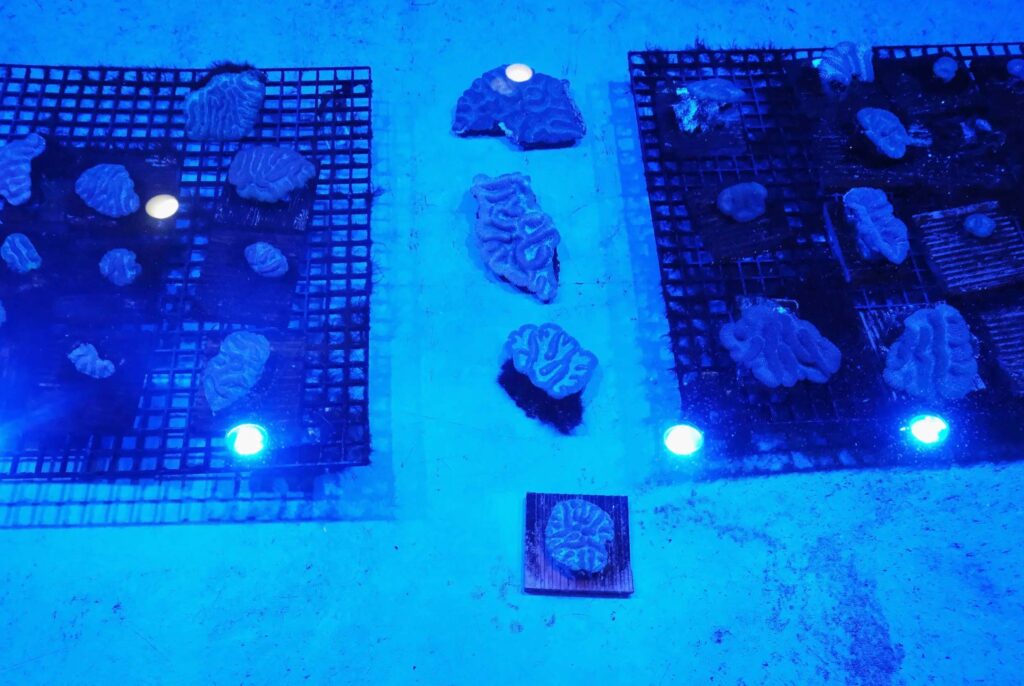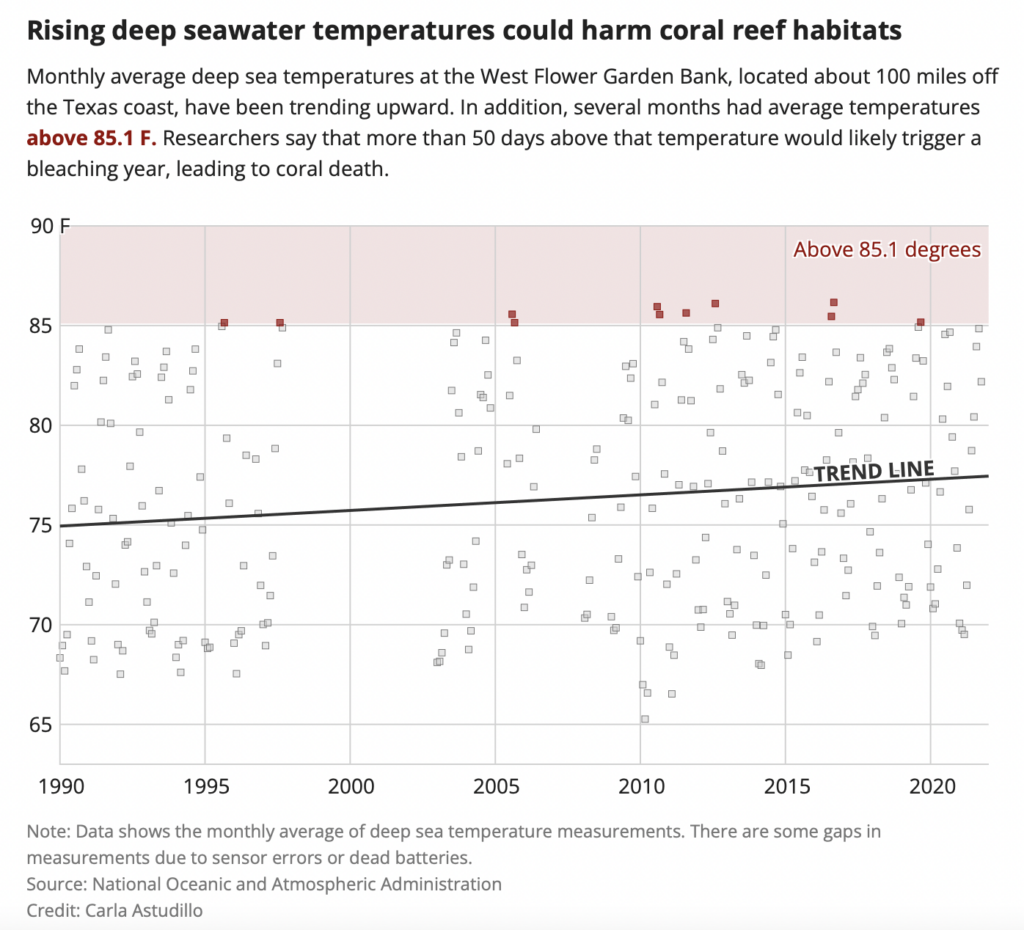From The Texas Tribune:
This story is part of the Pulitzer Center’s nationwide Connected Coastlines reporting initiative. For more information, go to pulitzercenter.org/connected-coastlines.
GALVESTON — Biologist Brooke Zurita lowered a turkey baster into a tank’s still water. She squeezed a stinky, chocolate-milk-colored mixture with plankton, algae and fish eggs over a piece of rescued, wild coral. The food swirled like a wispy cloud.
Zurita and her team at Moody Gardens feed 150 coral fragments from five species at least once a week, in addition to giving daily doses of amino acids.
The coral need to stay alive because they could change the future. Scientists took them from a federally-protected area some 100 miles off the Texas coast called Flower Garden Banks to create a reserve population in case the Gulf’s wild coral die.
Months later, in April, the Florida coral left in shipping containers for Hobby Airport, bound for SeaWorld Orlando. They had grown from the size of softballs to the size of frisbees.
Learning to care for Flower Garden coral
Zurita worked through how to care for the Flower Garden coral. Some were better eaters than others. They preferred bluer light than the Florida coral because they’d come from deeper in the ocean.
Sanctuary staff, advisors and researchers meanwhile worked away at an assessment of how climate change could impact the sanctuary. The idea was to identify which parts of national marine sanctuaries are most vulnerable to climate change and why in order to help managers figure out how to make them more resilient, said Zachary Cannizzo, climate coordinator for the sanctuaries.
Climate change packed a “one-two-punch” following the disease that damaged the Florida reef, said Lisa Gregg, program and policy coordinator with the Florida Fish and Wildlife Conservation Commision. Last summer, months of hotter-than-usual ocean temperatures caused the worst coral bleaching ever recorded there.
In Texas, Flower Garden has generally been considered relatively safe from climate impacts because it’s in deep water, but the assessment work showed that even that protection won’t last as climate change continues to alter the ecosystem.



















